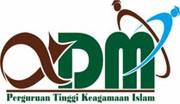Comparative Analysis of EGARCH and TGARCH Models in Stock Price Prediction
Abstract
Stocks are proof of the value of ownership of a company which are usually sold on the capital market, companies that buy and sell their shares will be easy to find with the existence of the stock market. The fund obtained by the company from investors who invest in several companies. Investors need to understand the models valuation of stock prices because investors have interest with changes in share prices. The purpose of study for looking the difference of the EGARCH model with TGARCH as a comparison which one is better at predicting stock prices. This research is a quantitative study using the EGARCH and TGARCH models by use Quasi Maximum Likelihood (QML) method. It was found that ARIMA (1 0 1) EGARCH (3 4) is a model that shows the best performance based on the smallest AIC value and the significance of all parameters. The ARIMA (1 0 1) EGARCH (3 4) model formed for forecasting returns and volatility is as follows: with ARIMA (1 0 1) EGARCH (3 4) models also have the MAE (Mean Absolute Error) value is 0.044%.
Full Text:
PDFReferences
F. El Wafa, “KOMPARASI BEBERAPA ASPEK PRAKTIK PASAR MODAL SYARI’AH DAN KONVENSIONAL DI INDONESIA,” AL IQTISHADIYAH J. Ekon. SYARIAH DAN Huk. Ekon. SYARIAH, vol. 3, no. 2, pp. 129–147, 2019.
B. P. P. Modal, “Panduan Investasi dan Pasar Modal Indonesia.” 2003.
H. Siahaan, “Analisa Risiko Dan Pengembalian Satu Saham dan Analisa Portofolio Dua Saham,” Univ. Tarumanagara Jakarta, 2007.
T. A. Gumanti, “Manajemen investasi: konsep, teori, dan aplikasi,” Jakarta: Mitra Wacana Media, vol. 1, 2011.
S. Handini, “Buku Ajar: Manajemen Keuangan,” 2020.
I. Angraini and I. Yusra, “Pendekatan data panel terhadap return saham: studi empiris pada perusahaan LQ45,” 2019.
H. Eliyawati, “Azizah.(2011).‘Penerapan Model GARCH (Generalized Autoregressive Conditional Heteroscedasticity) Untuk Menguji Pasar Modal Efisien di Indonesia,’” J. Adm. Bisnis, vol. 7, no. 2.
R. Maulana and D. Kumalasari, “Analisis Dan Perbandingan Algoritma Data Mining Dalam Prediksi Harga Saham Ggrm,” 2019.
R. F. Engle and V. K. Ng, “Measuring and testing the impact of news on volatility,” J. Finance, vol. 48, no. 5, pp. 1749–1778, 1993.
A. Maqsood, S. Safdar, R. Shafi, and N. J. Lelit, “Modeling stock market volatility using GARCH models: A case study of Nairobi Securities Exchange (NSE),” Open J. Stat., vol. 7, no. 2, pp. 369–381, 2017.
Sugiyono, Metode Penelitian Pendidikan Pendekatan Kuantitatif, Kualitatif, dan R&D. Bandung: Alfabeta, 2017.
S. Arikunto, “Prosedur penelitian suatu pendekatan praktik,” 2014
DOI: http://dx.doi.org/10.30829/zero.v6i1.15133
Refbacks
- There are currently no refbacks.

This work is licensed under a Creative Commons Attribution-ShareAlike 4.0 International License.
Publisher : Department of Mathematics Faculty of Science and Technology Universitas Islam Negeri Sumatera Utara Medan | |
✉️ Email: zero_journal@uinsu.ac.id 📱 WhatsApp:085270009767 (Admin Official) | |
 |  |  |  |  |



